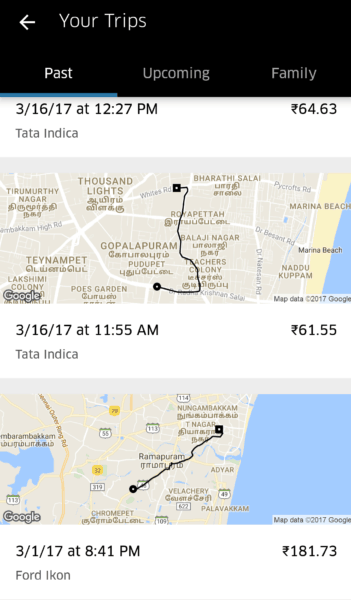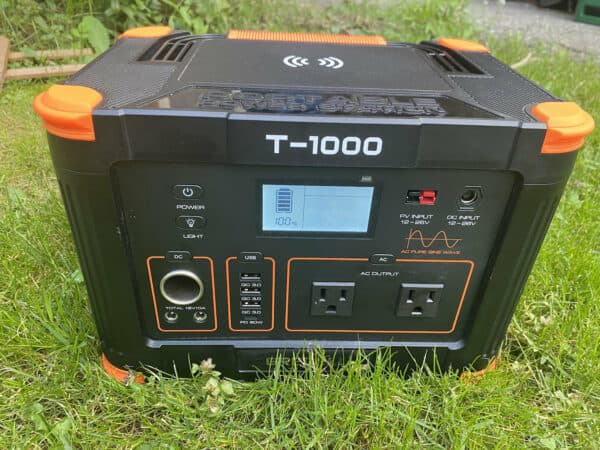How to Survive an Uber Ride in India
We may earn a commission from purchases you make after clicking links on this site. Learn more.On the television show Veep, Vice President Selina Meyers (Julia Louise Dreyfus) and her bag man Gary (Tony Hale) nearly lose their minds with elation after receiving some unexpected news.
I won’t spoil any plot points, but let’s just say they are at their lowest point yet when a deus ex machina changes their luck so dramatically that Gary’s nose gushes blood from all the excitement, and the two are left cackling on the floor of an elementary school bathroom.
Their utter joy mixed with surprise, the way their hearts open to embrace the sheer madness of it, is akin to what one feels when an Uber ride in India goes smoothly and successfully.
I lived in Chennai as an American expat for two years. Using Uber or any ride-hailing app in India is a mind-boggling experience. (OLA is the main competitor, an app we called one of the most useful for travelers in India. It’s a solid alternative if you have ethical objects to Uber.)
Like the country itself, riding Uber in India full of contradictions. It is at once miraculous and completely frustrating. It’s unimaginably cheap, unless you account for all the time you waste trying to get a driver to pick you up in the right spot. It’s safer than you might think, and at the same time, it will make you fear for your life.
Here’s what you need to know about using Uber in India.
Use the Same App
If you’ve used Uber in any other country, you can use the same app in India, with the same saved payment information. Being able to pay automatically with a pre-registered credit card is one of the biggest perks of using Uber in India
Other kinds of transport, such as auto-rickshaws and taxis, almost always accept cash only. Paying in cash is difficult because you’re more likely to get ripped off, and you need to keep handfuls of 10- and 50-rupee notes on you at all times. Additionally, when smaller vendors do accept credit cards, they often only accept those issued by Indian banks.
Get an Indian SIM
While it’s technically true you can request cars over Wi-Fi, you really need to buy an Indian SIM card and have an Indian phone number to use Uber. Nine out of ten times, the Uber driver calls to confirm the location before picking up the rider. If you don’t answer, the driver may cancel the ride, or simply never show up.

There are a few reasons for the call. First, no one trusts GPS. Second, the driver might be in a location with poor mobile service, where his map isn’t loading fully. Third, the driver might not have strong map-reading skills, and he might not know your location from looking at a phone screen; he needs to know your landmark.
Finally, the driver might also want to confirm your “drop point” or destination, even if you’ve entered it into the app. Note: I use male pronouns to refer to Uber drivers because they are almost exclusively male in India. I’m not especially pleased by that fact, but it’s a fact nonetheless.
First-time travelers to India might find this phase of the transaction incredibly frustrating. The whole point of ride-hailing apps is that they instantly transmit your location and destination to nearby drivers, who can evaluate that information before deciding to take you on as a customer. But alas, in India, things are different.
Read the Descriptions of Car Options
In different regions, car options in the app, like uberXL, vary. They also change at the drop of a hat. Be sure to read the descriptions of the options (by tapping on the information icon beside them) before requesting a car.
The most expensive choice in India is more likely to be a Tata minivan than a luxury SUV. Also, don’t expect to find any options with car seats for children.
Know Your Landmarks
The street name and address of your pick-up point and destination are moot. You need to know the closest landmark, which is how locals navigate. Large hotels and shopping malls are good landmarks, though it helps to know the neighborhood name, too.
Landmarks can go by multiple names, or there might be two places of the same name in different neighborhoods, as I learned one night when my driver veered off course toward the other Sai Baba Temple.
Google Maps is still unreliable in much of India, so don’t expect to simply look on a digital map to figure out what’s nearby. You may need to ask for help with landmarks.
Don’t Be Shy About Flagging Down a Local
Let’s say your driver calls you and… you can’t understand a word he says. Maybe he’s speaking another language, or maybe you have a hard time understanding his dialect and accent of English.
It’s not at all inappropriate to flag a parking attendant, guard (most businesses and some residences have guards), or someone else working nearby, and kindly ask them to speak on the phone for you. It’s India. Someone is always around.
Ignore the Timer
You know that timer in Uber that tells you how soon your car will arrive? Ignore it, and plan for it to take longer. I’ve had drivers call me to say they are finishing their tea and will come in 10 minutes. I’ve watched in the app as the car icon moved farther and farther from my location because the driver had to run an errand first.
When a driver does arrive promptly at your correct location, and without calling first, it’s a momentous day.
Confirm the Trip Starts
When your car arrives, the driver might ask if he should “start the trip,” which means turn on the Uber meter. If he doesn’t ask, make sure you watch your app to confirm it has indeed started. If the trip doesn’t officially start at the beginning of your journey, the driver might later claim that something went wrong in the app, and demand you pay him in cash.
I’m sure honest mistakes happen from time to time, but this is a scam. Avoid it by paying close attention for the app to show an “On Trip” message.
Get regular updates from the world of travel tech and remote work
News, reviews, recommendations and more, from here and around the web
Hold On!
If you happen to get into a car that has seat belts, lucky you! Buckle up. More commonly, drivers tuck seat belts deep into the seat, and occasionally they cut them out completely. I’ve gone fishing for my fair share of them, with mixed success.
With or without the seat belts, being in a car is still a much better option than being in an auto-rickshaw. Sure, auto-rickshaws have some advantages over cars, but their major flaws become evident in the first monsoon rain.

In the car, lock the doors for safety (auto-locking features aren’t standard), and keep the windows up. Driving in India is every bit the horror show you’ve heard it is. Between the potholes, free-roaming goats, and people literally hanging off the side of vehicles, anything could happen at any moment.
Keep one hand on the grab handle and the other on your phone, so you can glance down and verify you’re on the correct route from time to time, or are rerouting appropriately.
I like to have a second mapping app available in case Uber’s inbuilt one fails to keep up. Google Maps is my go-to, but Maps.me is another great option. Both let you save maps offline, a highly valuable feature for travelers.
Pay Low, Low Prices

Just as in any other country where Uber operates, the app automatically charges your credit card for the price of the trip… and in India, it’s absurdly cheap. Looking through my old receipts, I frequently only paid around 60Rs to go short distances in Chennai (less than $1 USD), and around 200Rs for a 25-minute trip to the airport.
Rides I took in Mumbai and New Delhi were longer in distance and did cost a bit more on average, but still, I never paid more than about $5 USD for any ride. I now live in the Washington, D.C. area, where the base fare for an UberX ride is currently $6.80. I still can’t get over how cheap it is to hire a car, on demand, in India.
India is complicated and challenging, to say the least. I have incredibly mixed feelings about supporting Uber as a company, not only because of its bad reputation as a corporation, but also because drivers in several Indian cities went on strike for poor working conditions and low wages in early 2017.
There’s no denying that Uber is a convenient, relatively safe, and cheap way of getting around Indian cities in a pinch. however, and knowing some of the local customs for using it at least gives travelers the option.
Have you taken an Uber in India? How did it go?









This is just India!
A mind boggling experience and worth every rupie you spend.
Hamba kahle & totsiens
Great and accurate article about Uber in India! I have had a recent stressful and frustrating experience with them:
I took an Uber last week to the AirBNB in Mumbai where my wife and I are staying while visiting family. I had a local hot spot device that a relative loaned us in order to summon and use Uber with my iPhone without activating my $10 a day Verizon Travel Pass. We had quite a few bags and luggage and were also jet lagged after flying 17 hours nonstop from Toronto to Mumbai.. In the confusion and exhaustion of the moment, I left the hot spot device in the Uber.
In Mumbai, after completing a ride, the driver’s telephone number is not visible in the app. So I emailed Uber through the app. They said they had contacted the driver who said he had it and gave us his number to call to arrange return of the device. Over the next three days, we arranged specific times and places for him to meet us. Each time he never turned up. Then he stopped answering his phone when I called. I complained to Uber and its rep promised to escalate it and get back to me. Multiple attempts to reach them have resulted in no reply or promises of a call from “a member of our team” that never materialize. Ten days later, I have given up on Uber remedying the situation. Their customer service is only that in name, useless for any actual real need.
Unfortunately, the competition for Uber in India is Ola that does not work with foreign phones or allow foreign credit cards.
I now check carefully for anything that might have fallen out of my pocket before leaving the vehicle.
Digging for seat belts: A travel doctor once advised that travelers to India should be more concerned with getting hurt from a traffic accident than from bad food. So I always dig into the back seat for those seat belts that are buried in the crease or sit in the front. But invariably when you dig a seat belt out of the back seat, it is filthy, so that’s something to watch for.